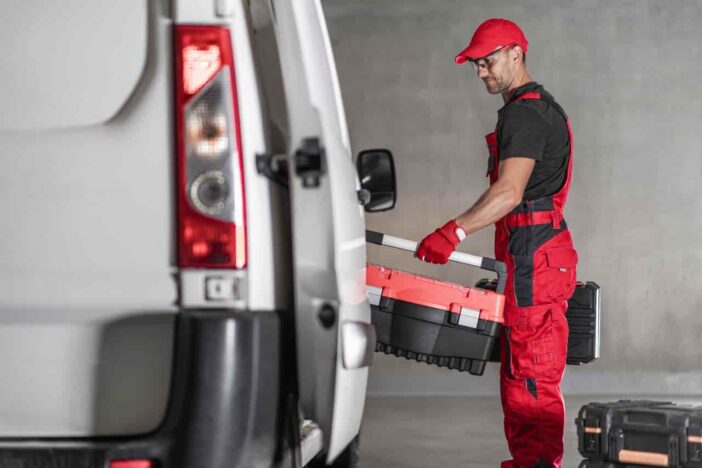The transportation industry has necessitated the demand for commercial fleets. So far, it’s become one of the most profitable ventures of the modern world. Across the globe, individuals and businesses engage in commercial fleets to meet essential personal needs and delivery purposes.
But the commercial fleet business is not all glitz and glamor. It is capital-intensive and is a high-risk, high-reward type of business. Thus, practical cost-benefit analysis helps determine your returns on investment (ROI). Since you’re out to make a profit and grow your business, you’ll need to cut costs. This article details some ways to achieve cost-effective growth.
What Does a Commercial Fleet Mean?
The concept of a commercial fleet is simple: using cars, trucks, and buses to make money. Whether the fleet is owned or leased, such as truck hire, the purpose is to profit. Therefore, a commercial fleet follows the system of cost minimization and profit maximization.
Contrary to opinions, a fleet business is not entirely about delivery. So, it’s not only adopted by shipping and logistics businesses. Other companies that engage in commercial fleets include home installers, construction crews, and bus companies.
Ways To Reduce Cost and Grow Your Commercial Fleet
There are proven ways to grow your commercial fleet business without compromising costs. Here are 7 top strategies to consider:
1. Think Long-term Cost Implications
You can grow your fleet business by thinking about long-term cost implications. If you can do your cost-benefit analysis right, you’ll get an overview of your cost movements, whether positive or negative. Basing this insight on specific trends and factors, you can rationalize the amount of money going into crucial aspects, such as maintenance, operations, and fleet acquisition.
2. Ensure Proper Preventive Maintenance
Prevention is the antidote to corrective costs. You need to keep your fleet in order and in great shape to avoid the fast depreciation of your vehicles. Preventive maintenance helps avert unnecessary and expensive repairs. More so, it reduces downtime, saves fuel consumption, and increases your vehicle’s lifespan.
In short, sticking to a preventive maintenance routine reduces costs and improves fleet services. You can use your savings from repair expenses to other aspects of your business, such as increasing the number of vehicle units.
3. Train Your Drivers Effectively
Drivers play a crucial role in expanding a commercial fleet. Yes, you may have allocated costs for vehicle maintenance, but it would be more efficient if you had qualified drivers who could also help you take care of your investments.
Driver education is beneficial in different ways. When drivers are educated properly, they can understand the implications of actions such as fleet inefficiency. They can also understand how to save fuel, maintain vehicles, satisfy customers, and promote the fleet’s brand. Professional drivers’ safety programs encourage the reduction of accidents and vehicle damage. These measures help you grow your vehicle efficiency and improve quality sustenance at reduced costs.
Related: How to Make Money Online with Cars
4. Communicate Cost-Saving Ideas
Communicating cost-saving ideas to your drivers and other personnel can save your company a fortune. When you allow them into the planning process to improve fuel efficiency and reduce non-profitable miles, they feel included in its growth.
You can also communicate your costs and earnings every year so they can have a balanced view of your fleet cost management. In fact, cost-saving ideas should be spread across the company and well-communicated. The more conscious workers are about your expenses, the better they can reduce them and help grow your fleet business.
5. Choose The Right Fleet Partner
Growing your commercial feet does not automatically mean purchasing new vehicles. Nowadays, some transportation companies choose to work with partner companies that are more familiar with particular locations. Doing so saves you from any additional costs and ensures an excellent quality of service delivery.
The best fleet partner for you may not necessarily be the most prominent partner. The choice of a partner shouldn’t be based on the partner’s size but on their ability to serve your needs effectively. The best fleet partners are those who have the experience, credibility, and proven track record of helping grow your commercial fleet. The right partner will align with your mission, meet your expectations, and project your business into the future.
6. Establish Expert Management
You can achieve cost-effective commercial fleet management through robust strategic management. Therefore, you need significant policies to achieve what you want with your fleet.
And, of course, the practicality of your policies depends on your management structure and team. If your organization boasts experts in transport management, you can accelerate cost-effective growth. However, you will first need to assess if hiring additional staff is necessary and beneficial for the company. This is an essential aspect of your cost-benefit analysis.
7. Outsource Fleet Administration
Sometimes, you have to avoid too much to focus on more strategic duties. By outsourcing your fleet administration, you can leverage the services of third-party expert management companies to get expert maintenance for your fleet. This way, you can reduce the administrative stress on your in-house team and get more efficient services from managed IT services.
Outsourcing gives you the flexibility to scale and reduce the number of employees more conveniently.
Conclusion
Commercial fleets grow through cost-effective strategies that help ensure the best outcomes. Some of these strategies have been recommended above. From planning to maintenance and analysis, the tips informed your decisions about costs. Therefore, adapting them to fit your company’s needs will help foster growth at an affordable rate.





